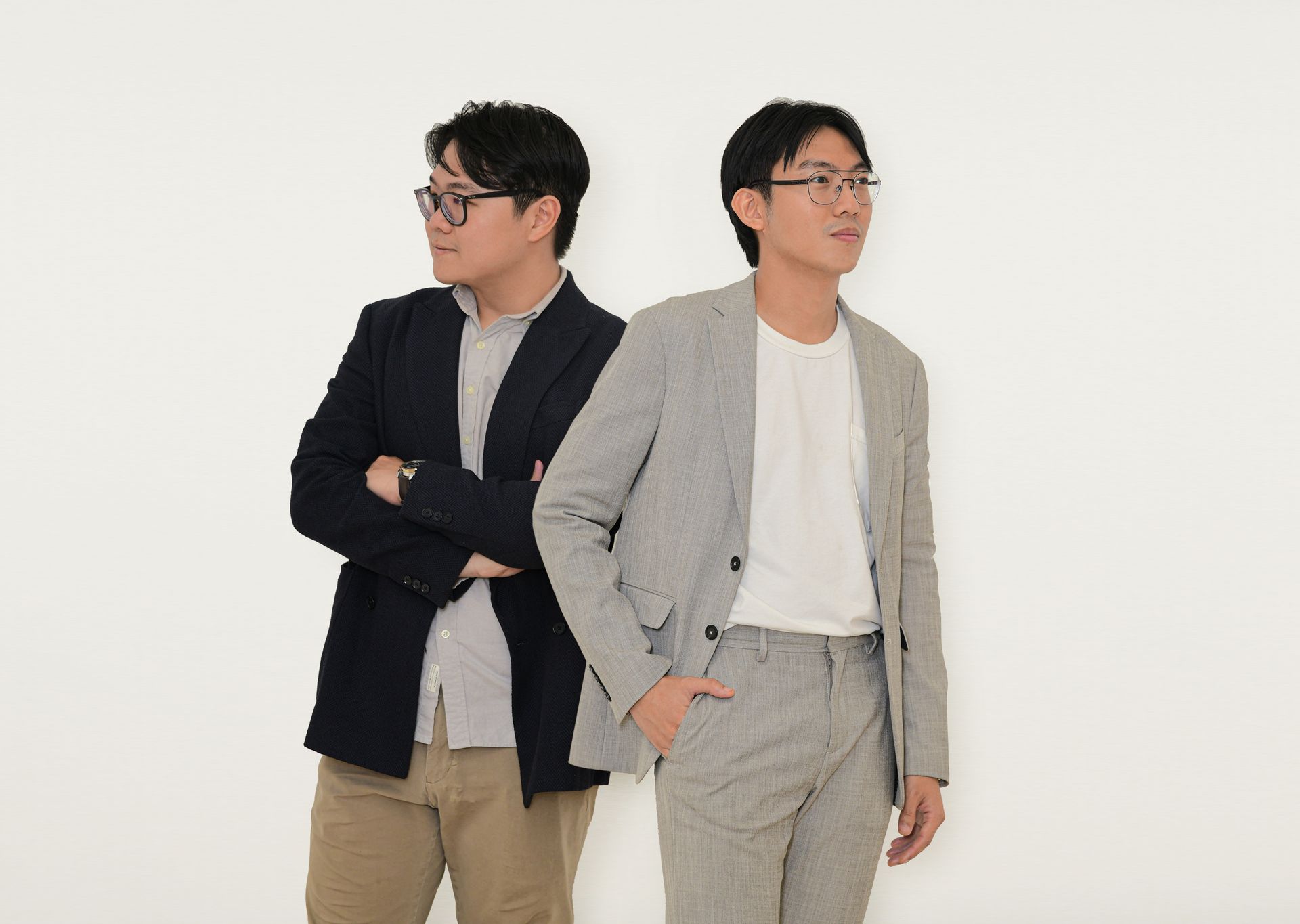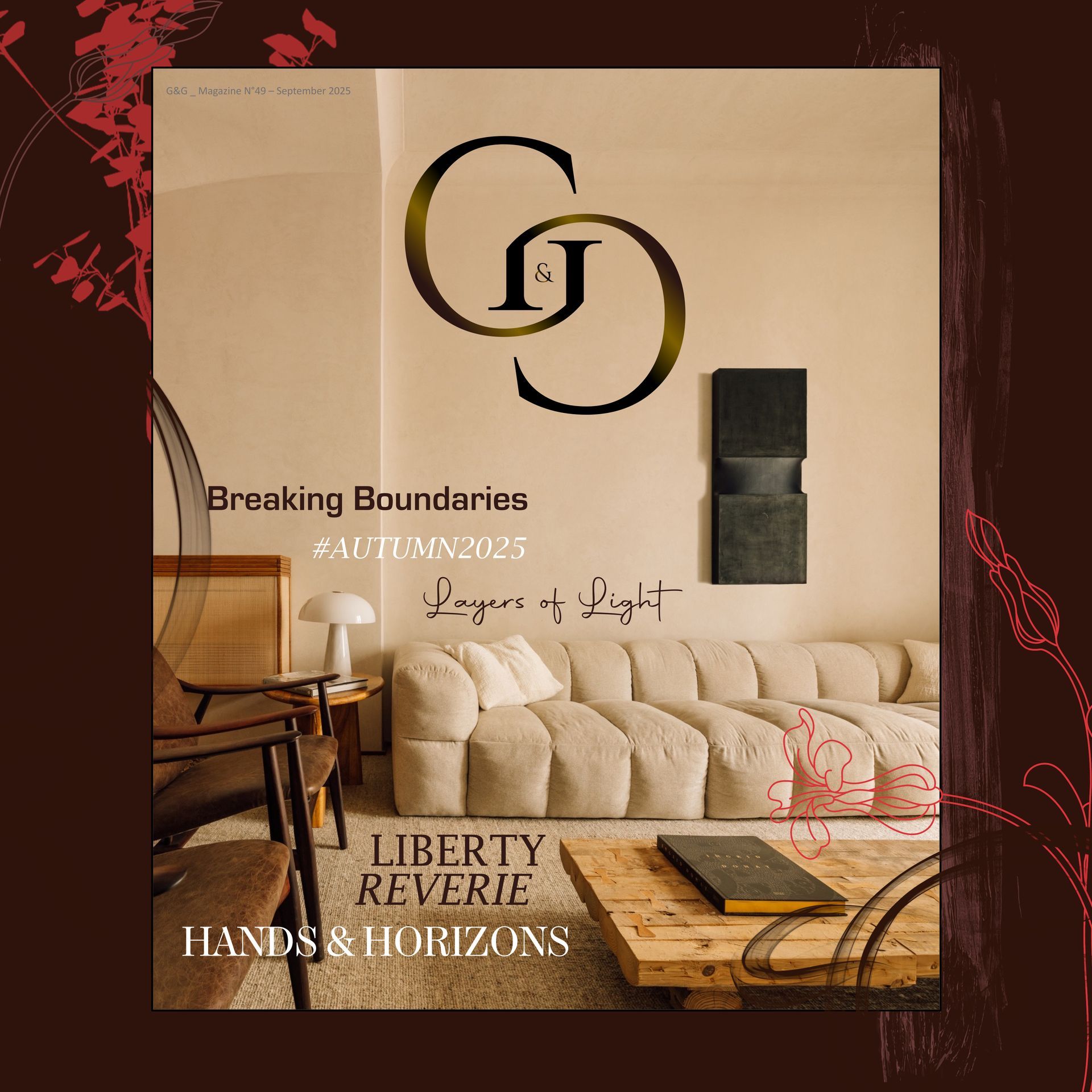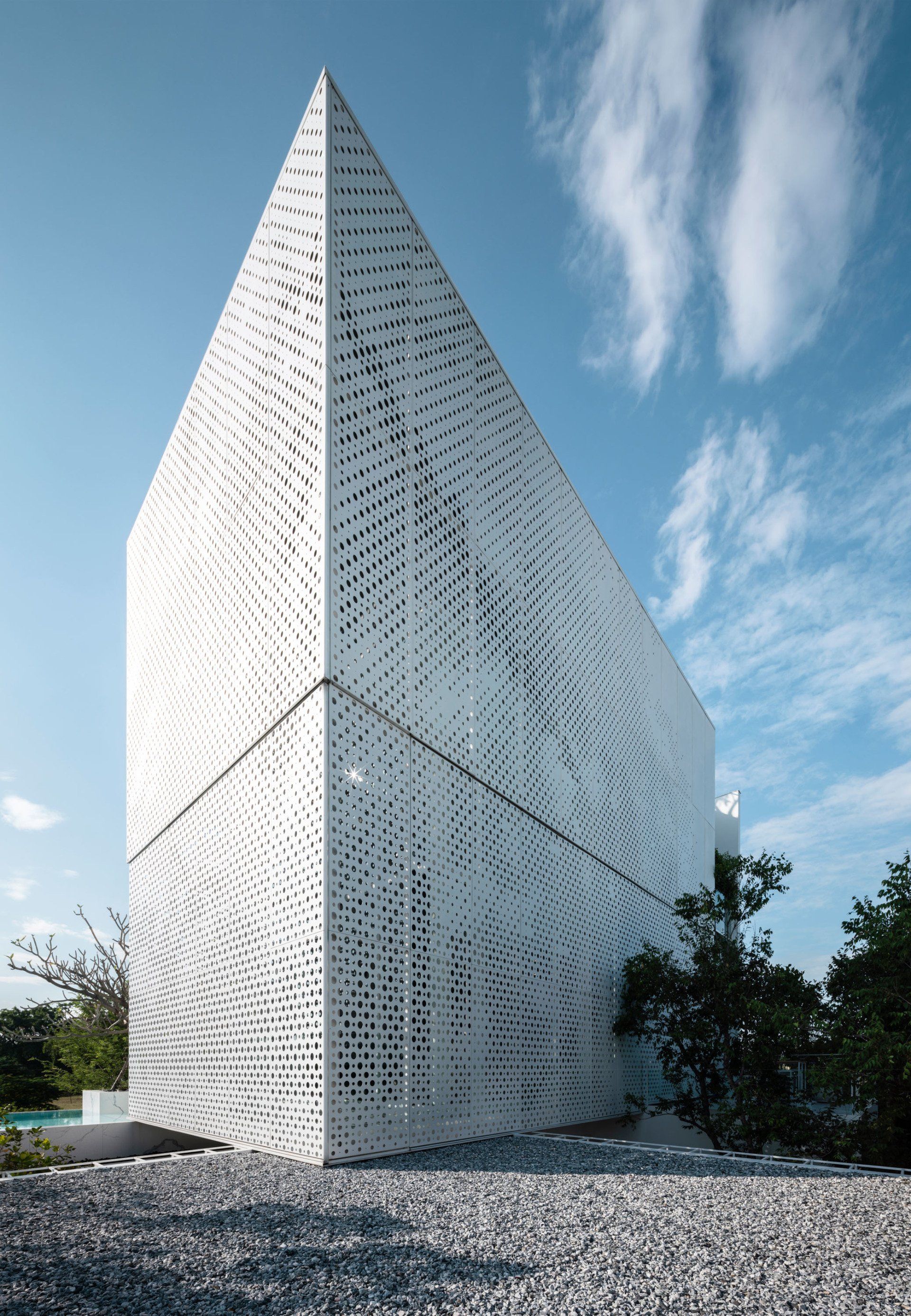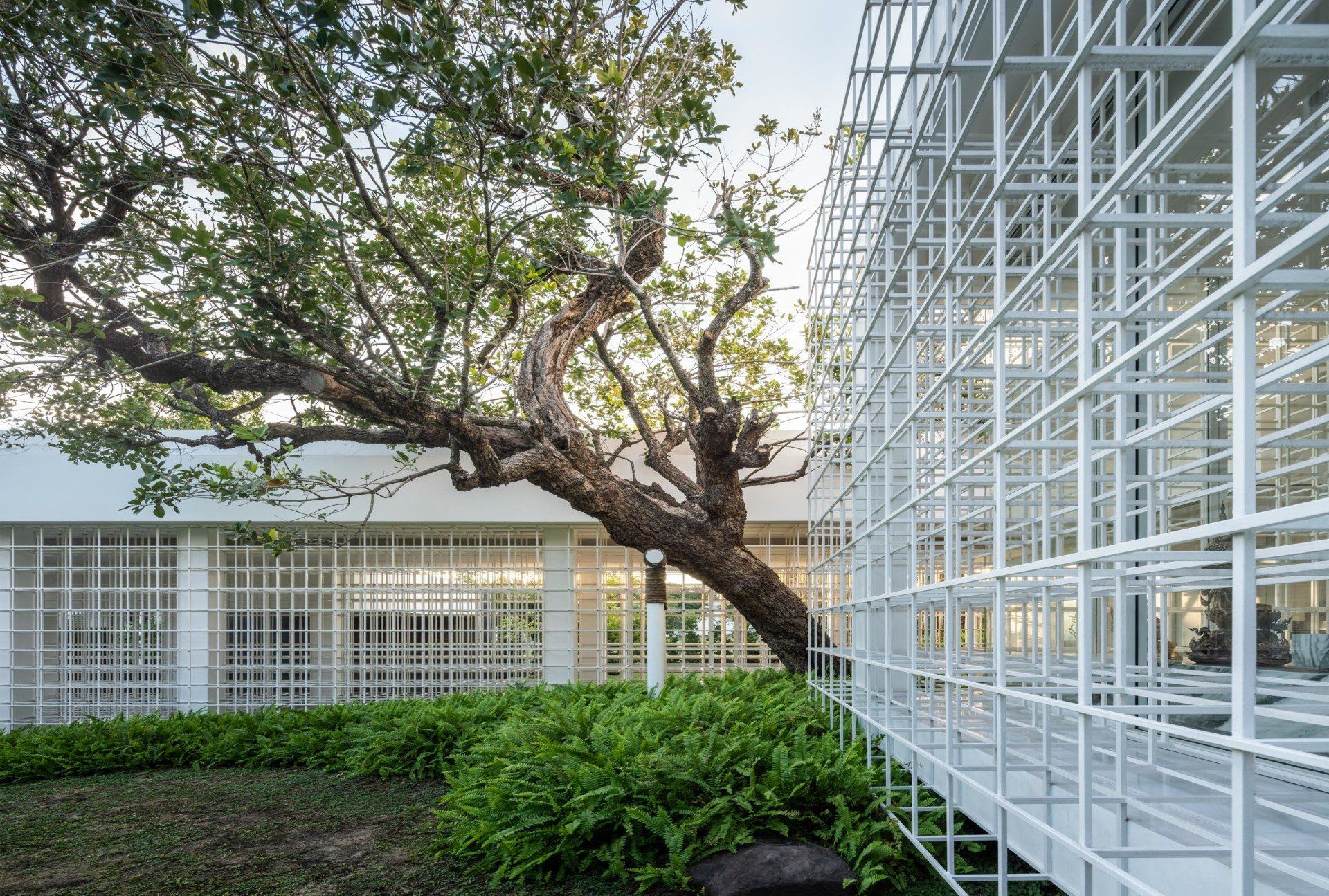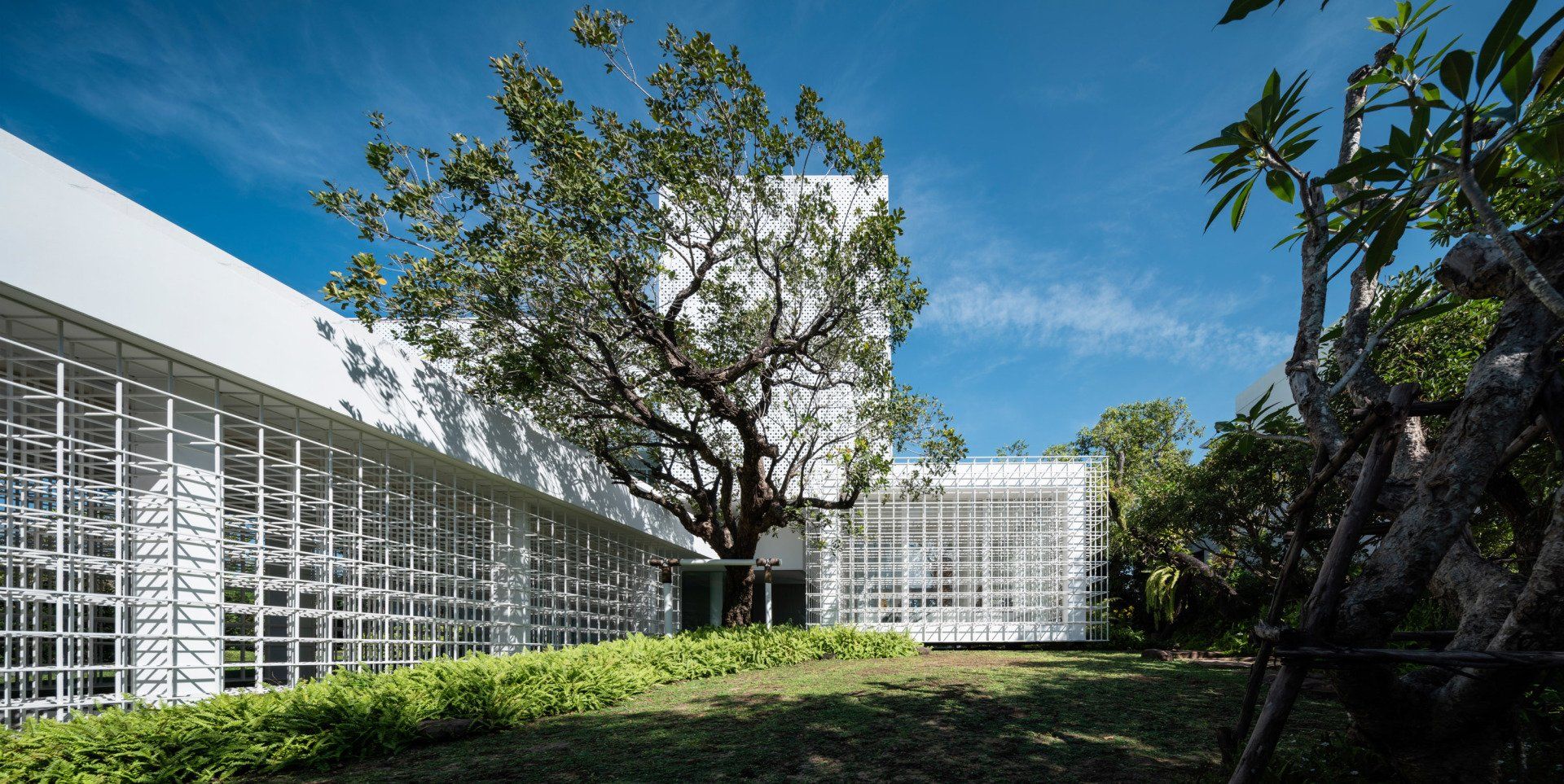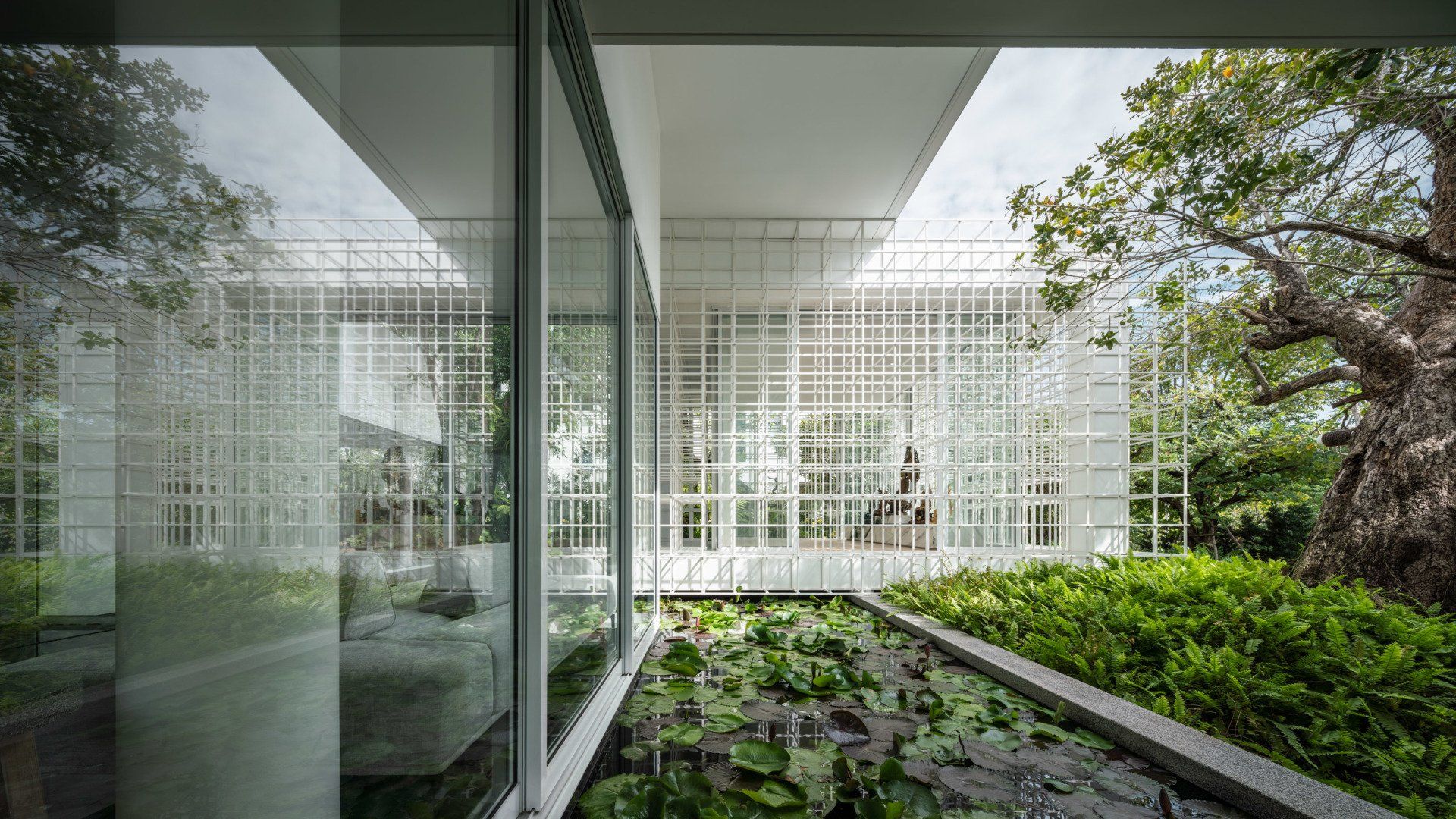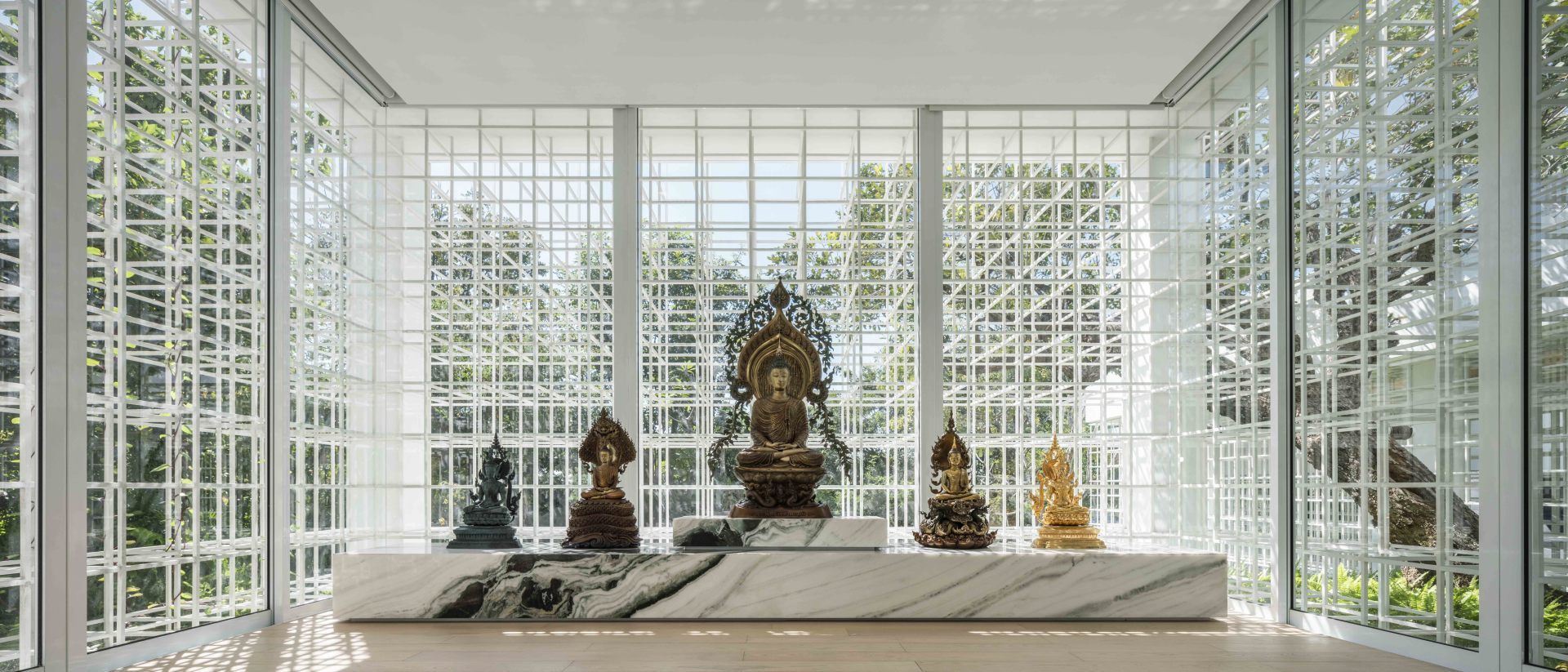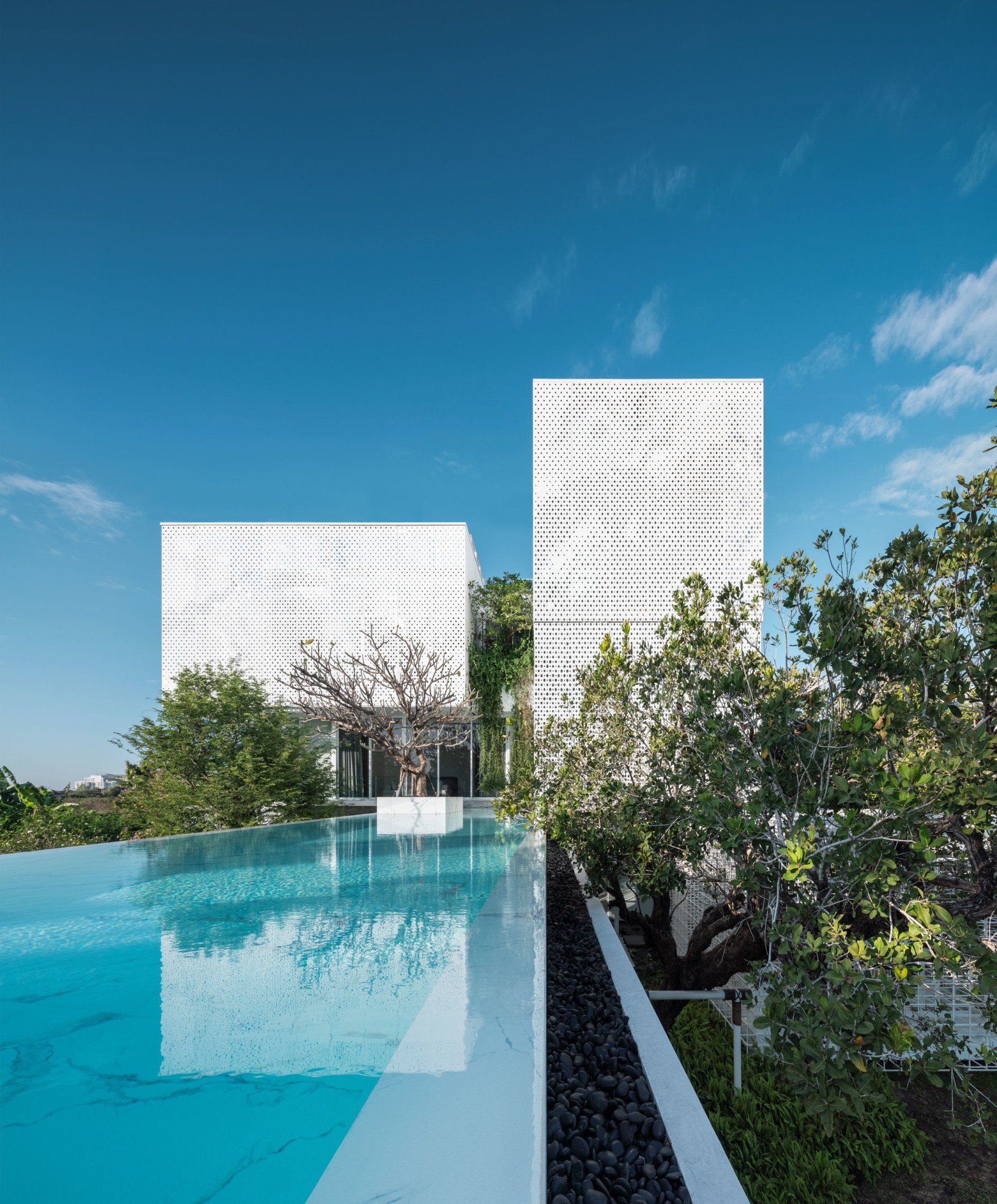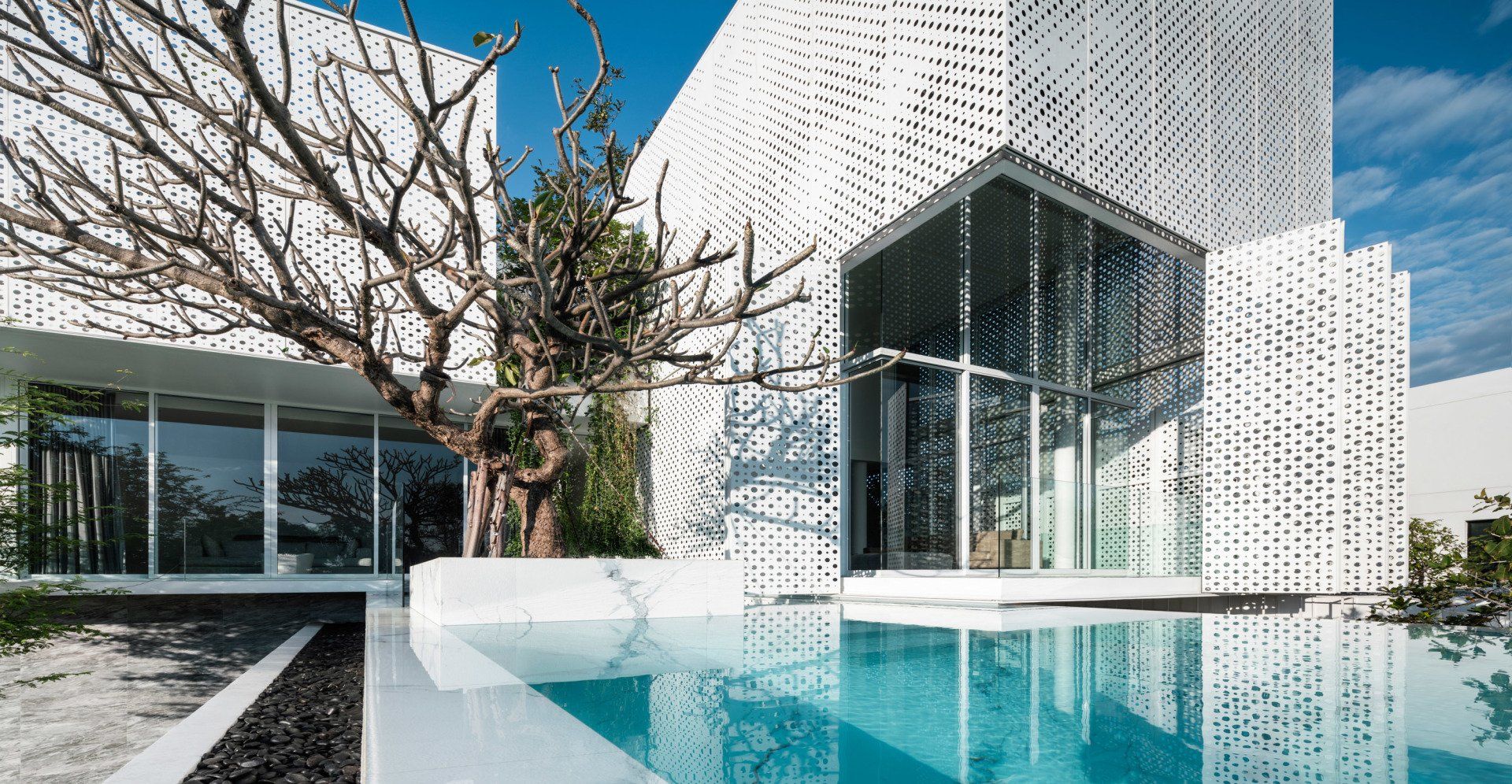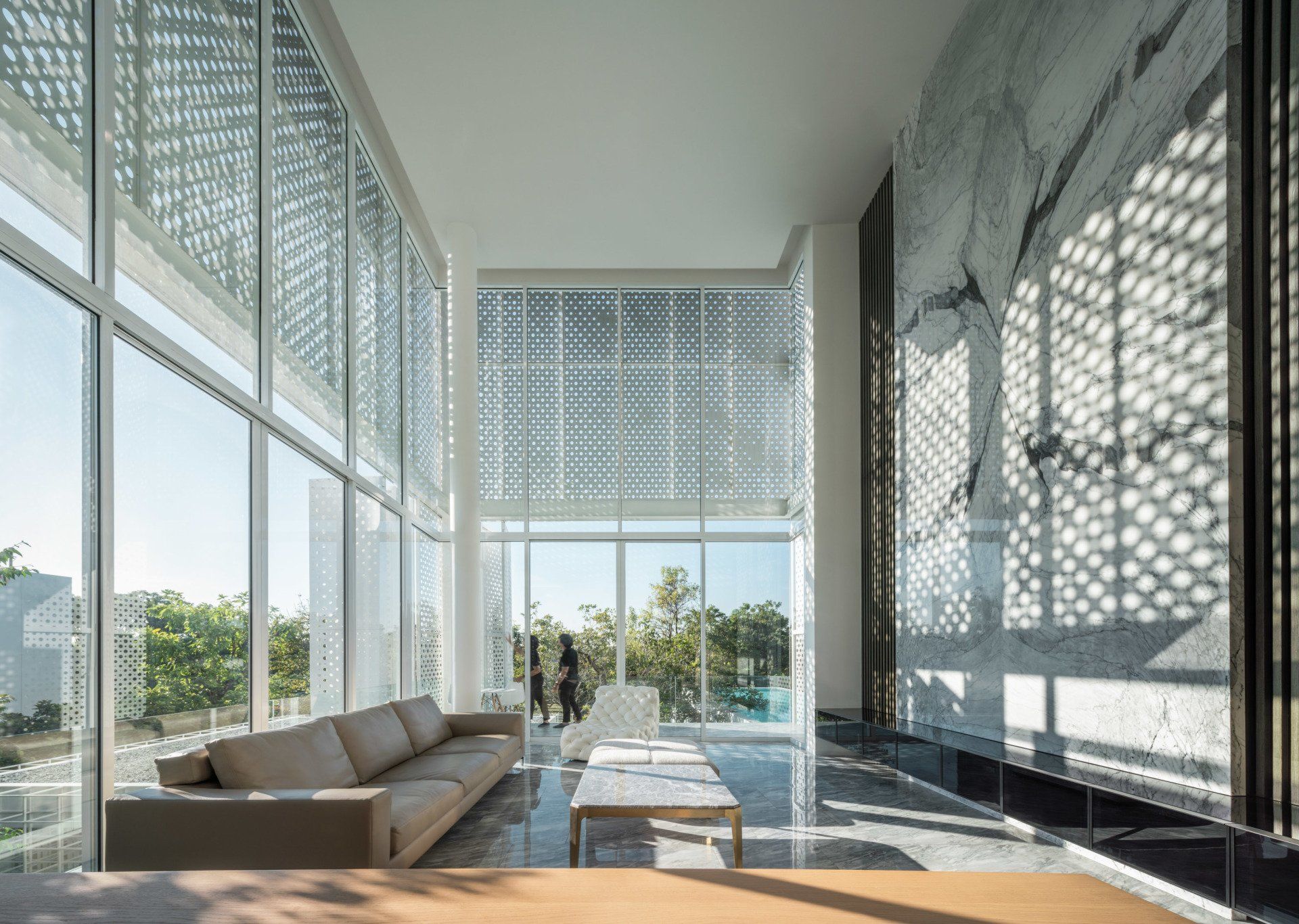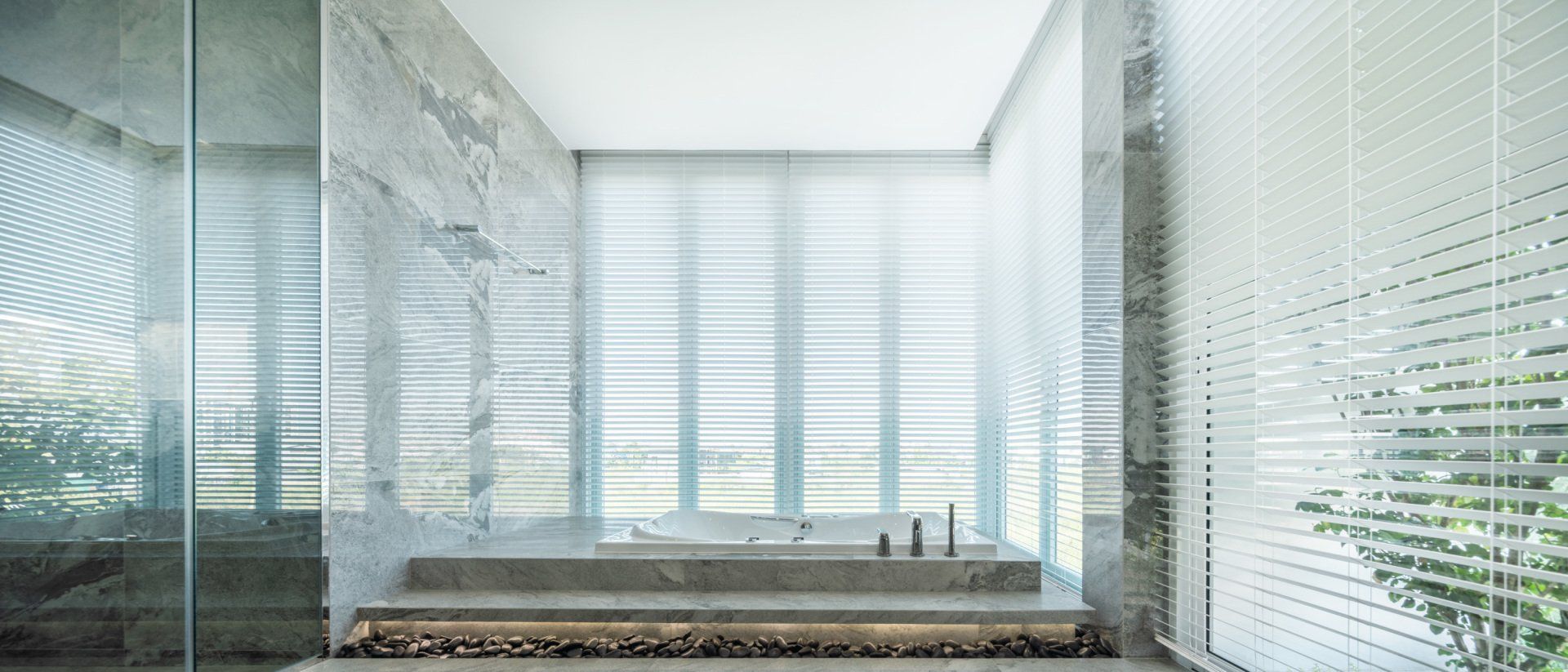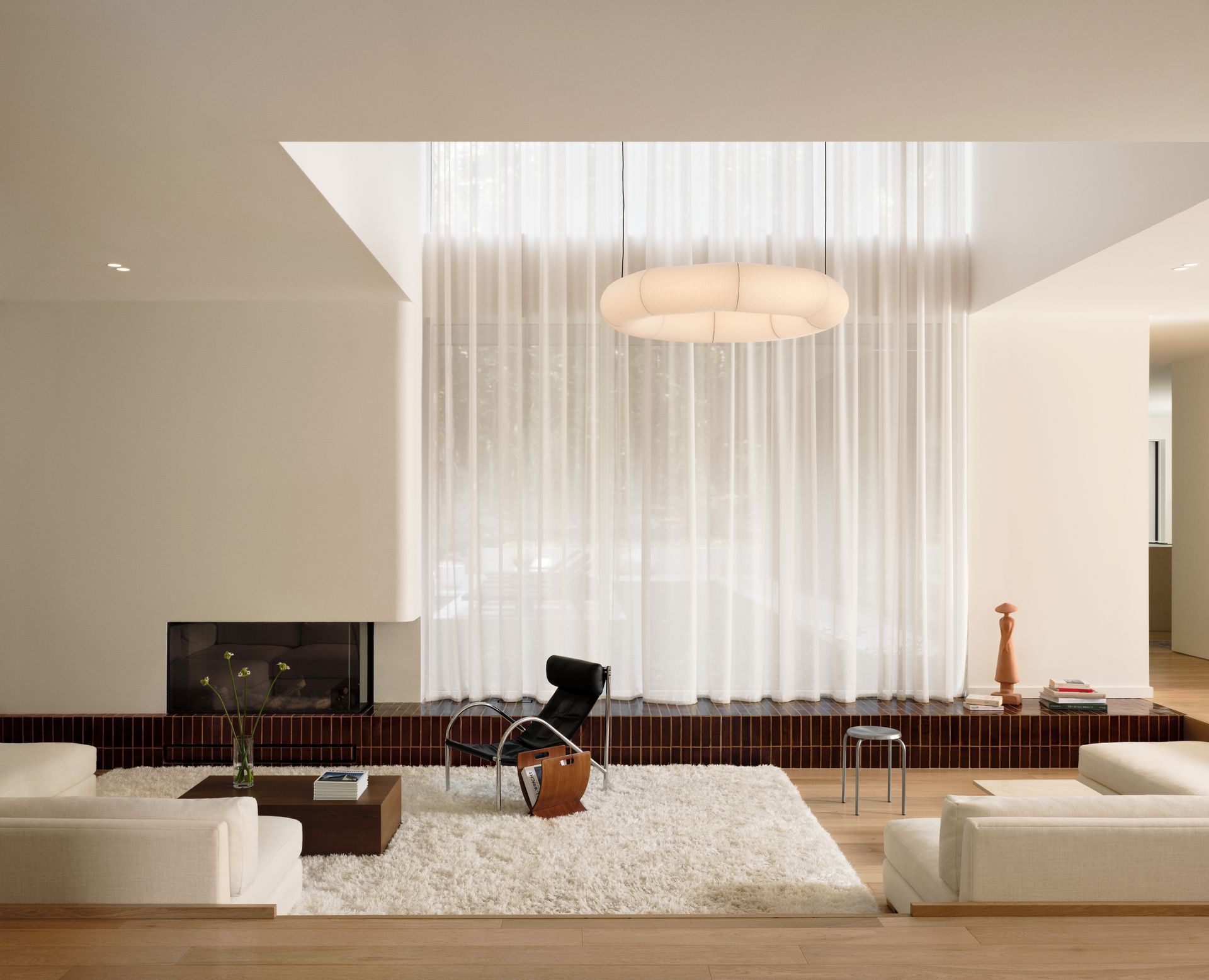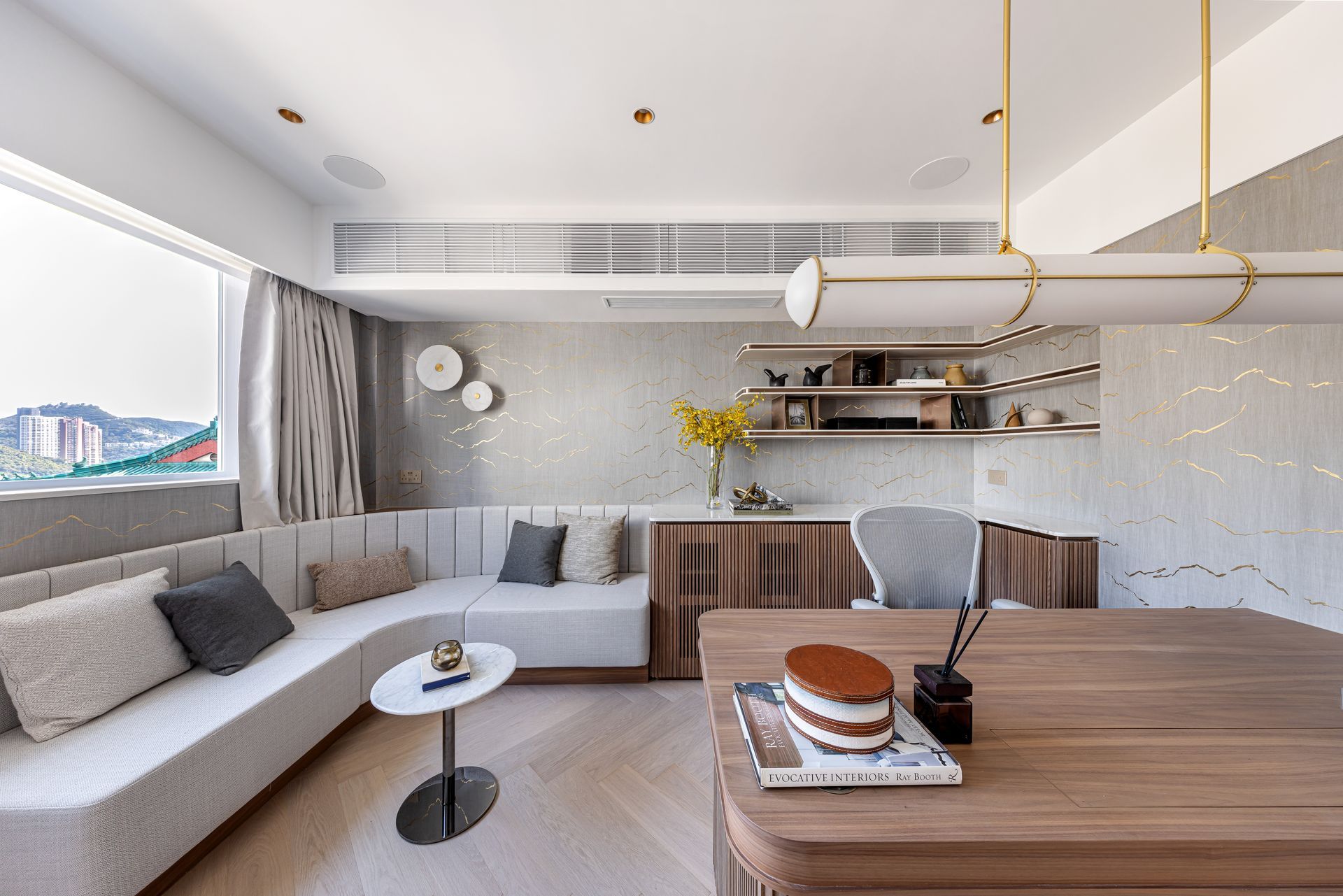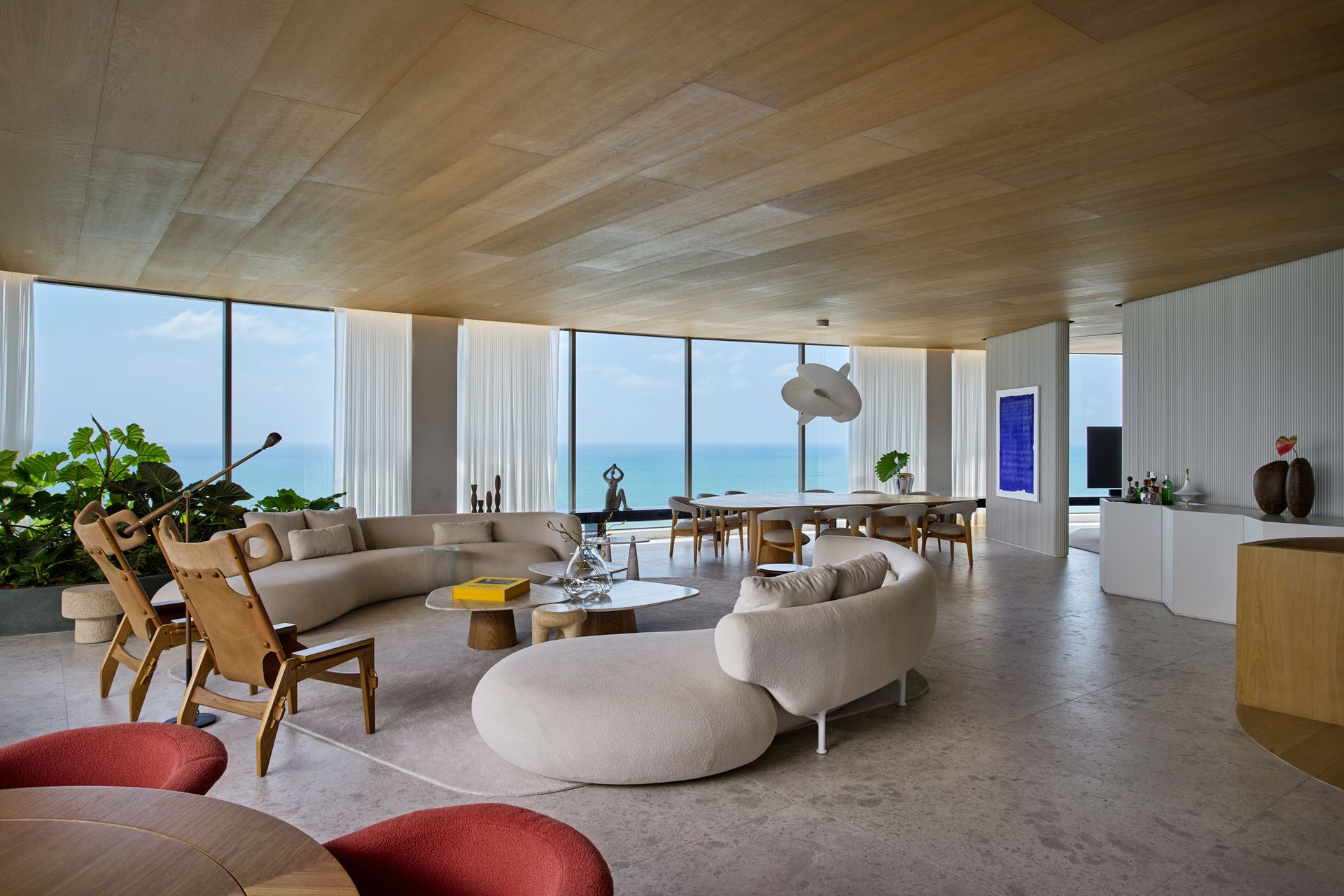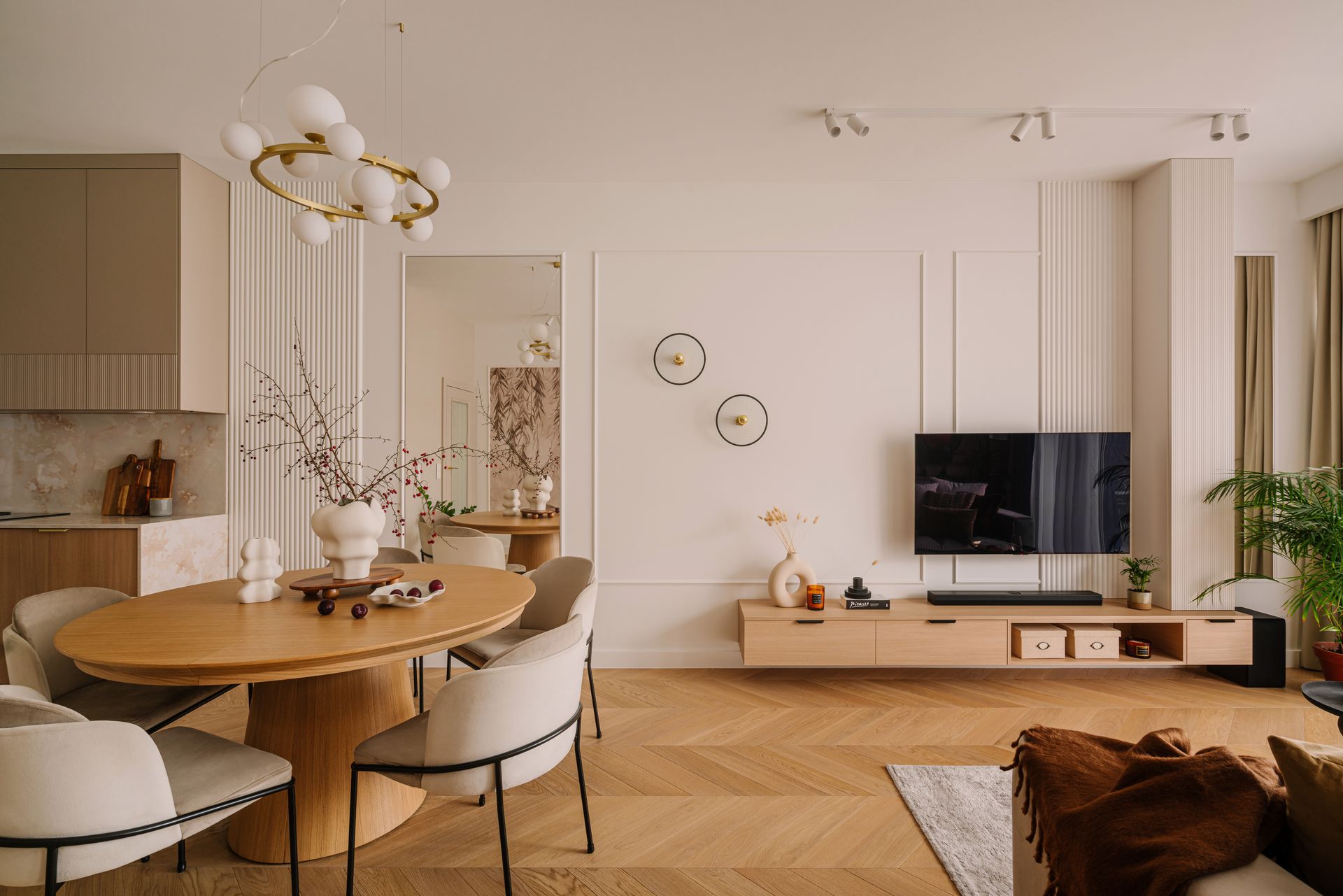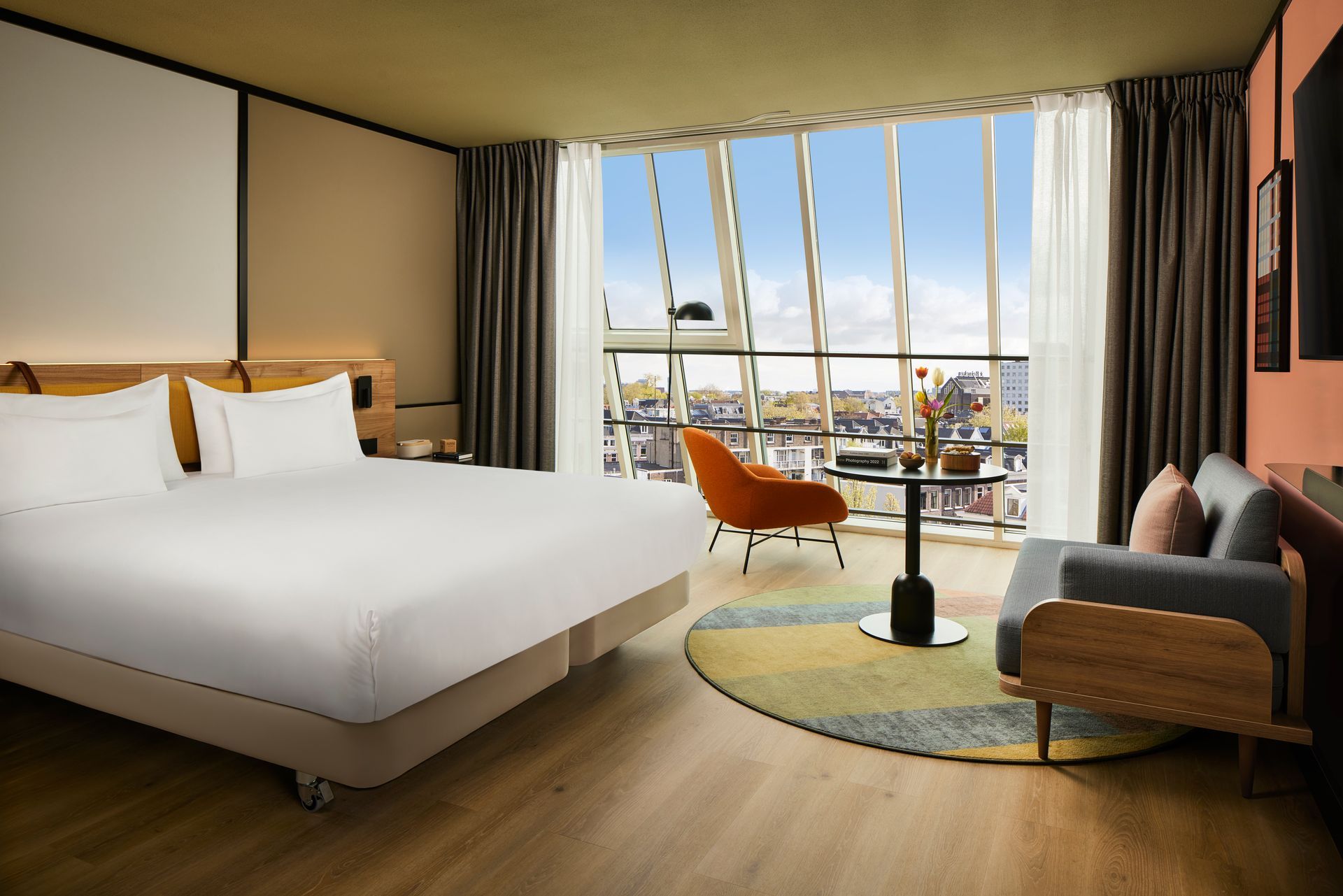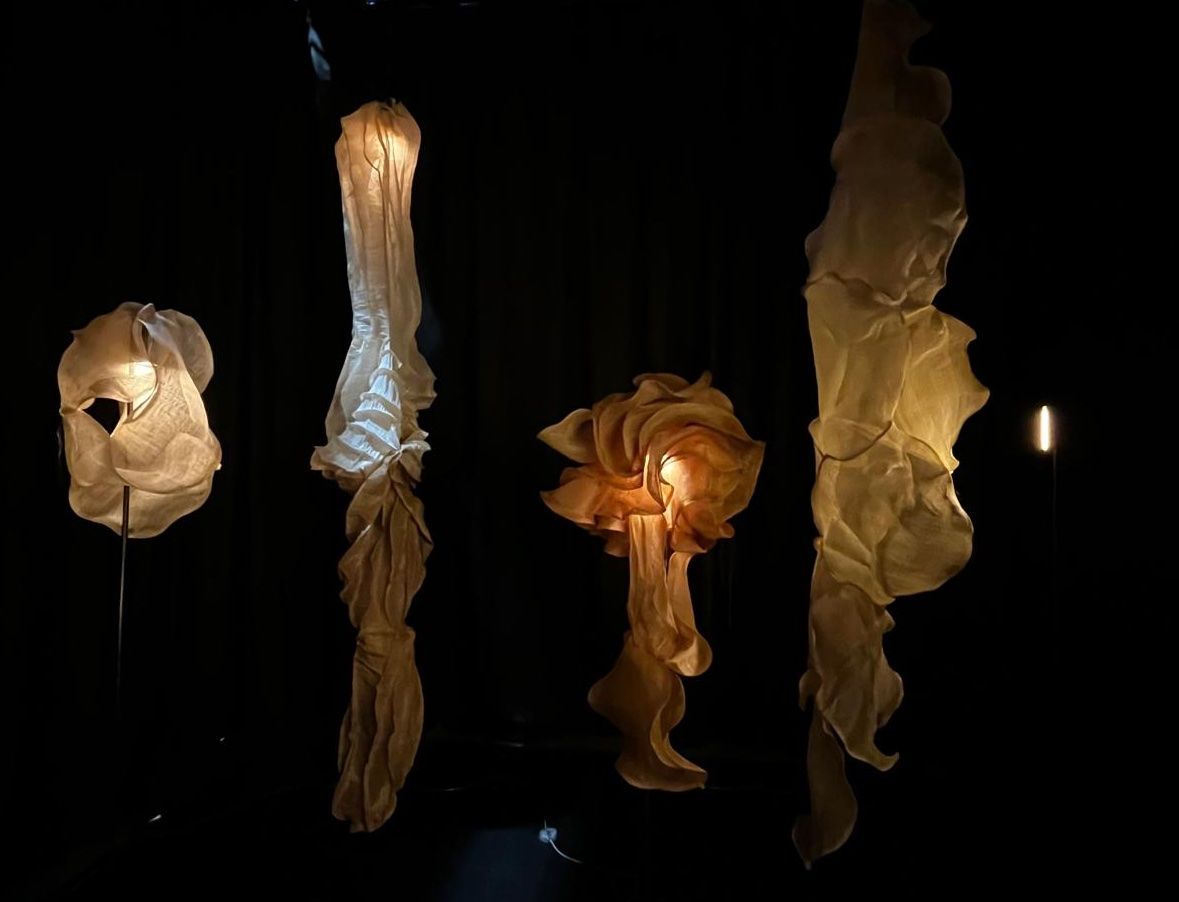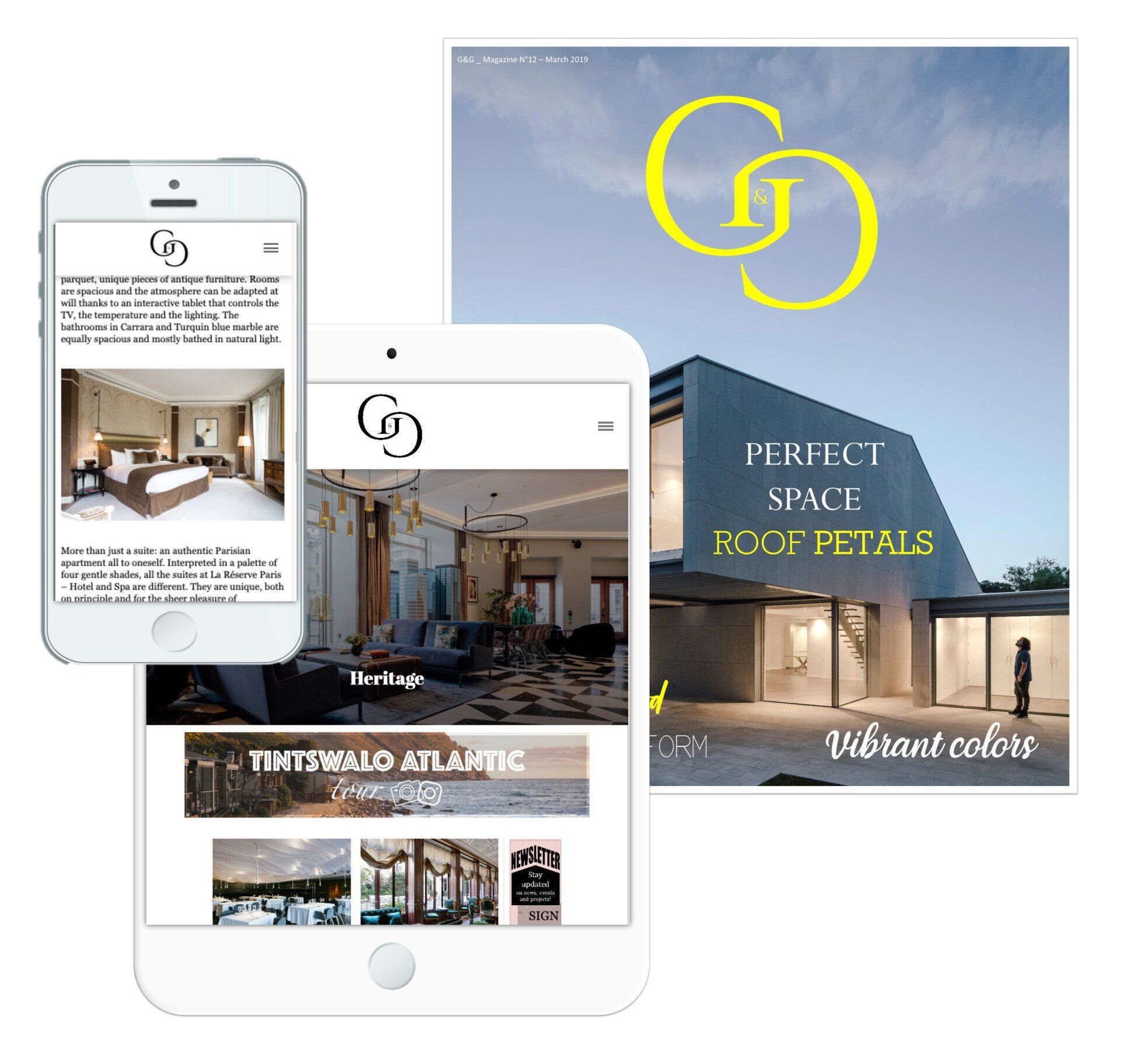Shade House
The Bangkok-based well known architectural firm, Ayutt and Associates design (AAd) projected a self-sustainable residence, implanted with an individual natural ecosystem that planned to become a part of a larger urban ecology and a solution for next generation of housing in the Bang Phli District, Thailand.
Principally, AAd targets the issue by lessening the superior role of the house, though increasing the importance of natural surrounding as the main protagonist of this project.
In the beginning, the Shade House, owned by a nature-loving couple, was planned to be a two-story private residence. This would cause its functions to spread out almost all over the entire site. However, with a plan to create the least footprint as possible, the house is thus converted to be a three-story with the parking lots placed separately in the front. This new strategy helps to raise the green-area square meters to be 60% greater, which is twice the minimum requirement of green-area regulations in Bangkok. Together with adding pocket gardens at every corner of the house and a green roof, the overall greenspace of this house is boosted to 90%. By the time the vegetation has fully grown and covers all the house’s elevations, the green area will be as much as 150% larger than its initial site. Consequently, it will meet an original intention of both the house’s owners and the architects—to maximize the senses of natural scene perception on site—by establishing a life-long communication between the dwellers and the surrounding nature, resulting the growing shade of the house.
The first-floor level is designated to be a “garden villa” guest unit. Visitors can choose to access this guest suite by passing through the main foyer or entering the unit immediately through a side door, located adjacent to the waterfall. The rest of the living spaces which need more privacy and security, reserved only to the house’s owners, are placed on the higher floors.
One of the most eye-catching element of this house is the white slender steel rods joined together as a sculpturing rigid frame. It forms geometric volumes that creates an immediate connection from the entry stair steps to the house’s main foyer. This sculptural detail not only encloses an outdoor terrace but is also framing a focal point and making the pathway more intuitive, adventure-evoking. A series of voids and opening, created by the white continuous frame, draws visitors forward. When reaching closer to the main door, a lotus pond appears to join the eyes, revealing another set of rigid frames standing among the pond. As guests move throughout the property, they are greeted with unexpected views of landscape, starting to unfold during the journey through the house. Besides from using this rigid frame to secure the house from robbery, it is aimed to block the eye sights of the outsiders. Because of the overlapping design technique, the white steel rods create an illusion that makes the frame look denser than it actually is. The designer tends to use these rigid frames to hover different types of wall materials. Some envelop the solid walls, some embrace the opaque part, and some encompass the transparent glazing windows; these all create different dynamic views along the house.
Since one of the house’s owners is a psychologist who is in need of a space to meditate, the designer decides to place the Buddha pavilion among the garden, in the middle of the land plot. This is to maximize the advantages of having surrounded by nature. In general Thai culture, architects always use the left-over space of the house to become a shrine and tend to careless about making the space breathable. Therefore, by making the Buddhist shrine a garden pavilion and enveloping it with transparent glazing panels, this will make the room still be engaged with other functions, at the same time, remaining peaceful atmosphere. The pavilion is also covered with the steel-rod rigid frames, which create an effect of frame mirroring, making the room elevations to be opaque one could hardly see what is inside.
The “pool villa” suite on the second floor is designed to be embedded among the trees creating a new sensory experience of nestling the seamless infinity pool among the clouds of tree leaves - a visual connection to the sky beyond. One can touch and enjoy being among the greenery and a blue sky while dipping in the pool. AAd design team furthermore proposed a different type of room arrangement that each floor will be functioned completely within itself. Each living unit is equipped with all the functions needed for a suite such as a bathroom, kitchen and pantry, garden, and terrace.
By putting all the living spaces on the upper floors, all the rooms are acting like a treehouse. Tree leaves and bushes not only provide blooming refreshment for the residents, but also serve as a natural buffer, protecting the house from the outsiders’ eyes. The facades of the living room are still maintaining the signature of AAd’s façade design: using the air gap and perforated aluminum panels to relieve the house from being heated as well as allowing sunlight and air ventilation to pass through. When measuring the temperature during summer season, these panels help cooling down the 39 degrees Celsius outside to be at 26 degrees inside.
The third-floor unit that rises above the tree canopy has a view towards a pristine landscape nearby the Suvarnabhumi airport.
The graphic of the façade holes is creatively punched imitating to the overlaid tree leaves. During daytime, when the sunlight shines in the room, it will create the same effect similarly to sitting underneath the tree and absorbing the sunlight that shines through the leaf layers. The sizes of the holes are also determined accordingly to the usage of the function inside. For example, the holes of the living-room perforated facades are punched larger at the standing level and the couch-seating level, while the holes at the sleeping level inside the bedroom are punched smaller in order to secure privacy. At night, when the internal light shine through these holes, the living quarter will become a lantern, leading the way home. However, with AAd’s careful design, the outsiders will not be able to see what is inside due to the level of these holes punched.
SHARE THIS
Subscribe
Keep up to date with the latest trends!
Contribute
G&G _ Magazine is always looking for the creative talents of stylists, designers, photographers and writers from around the globe.
Find us on
Home Projects
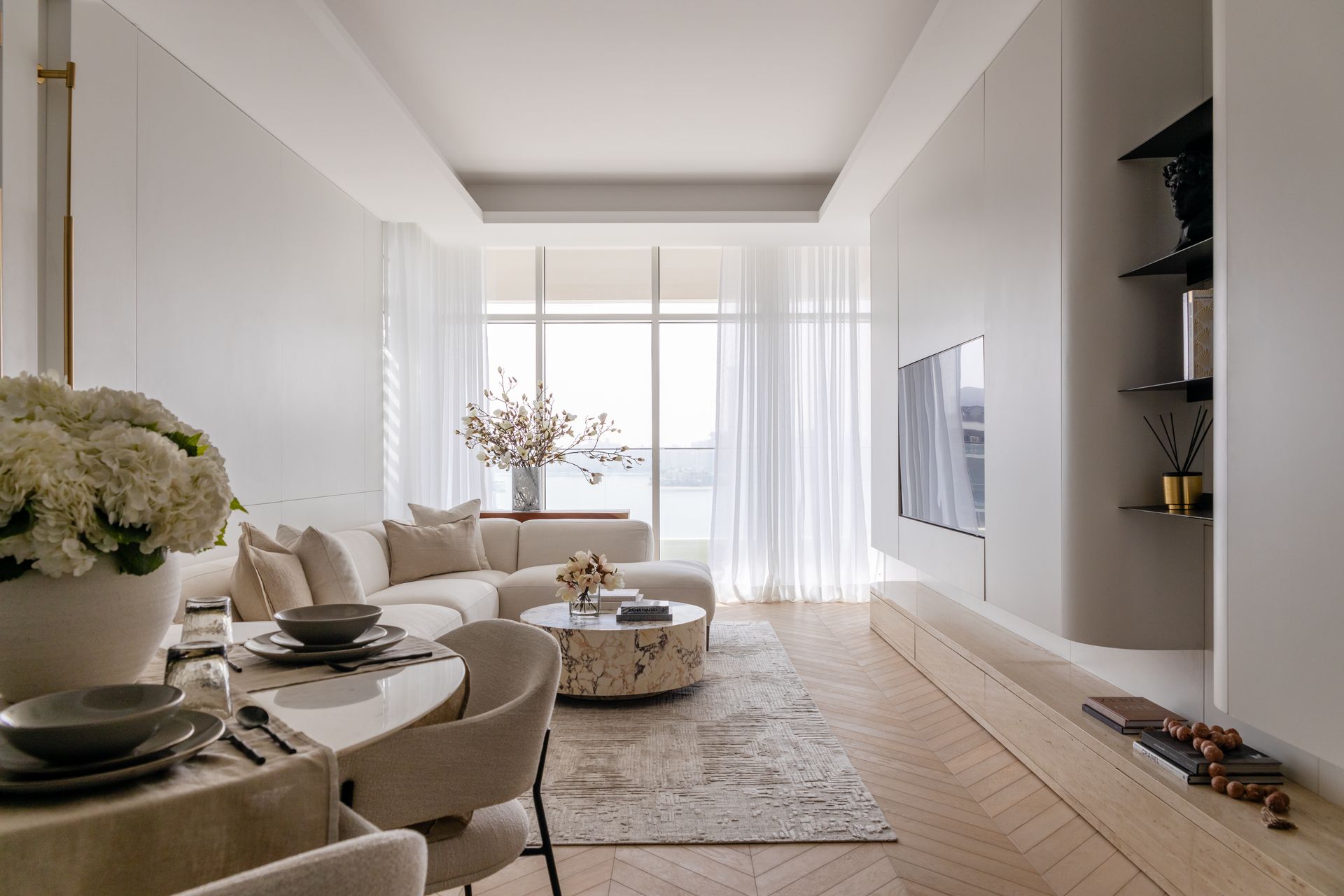
Popular Posts
